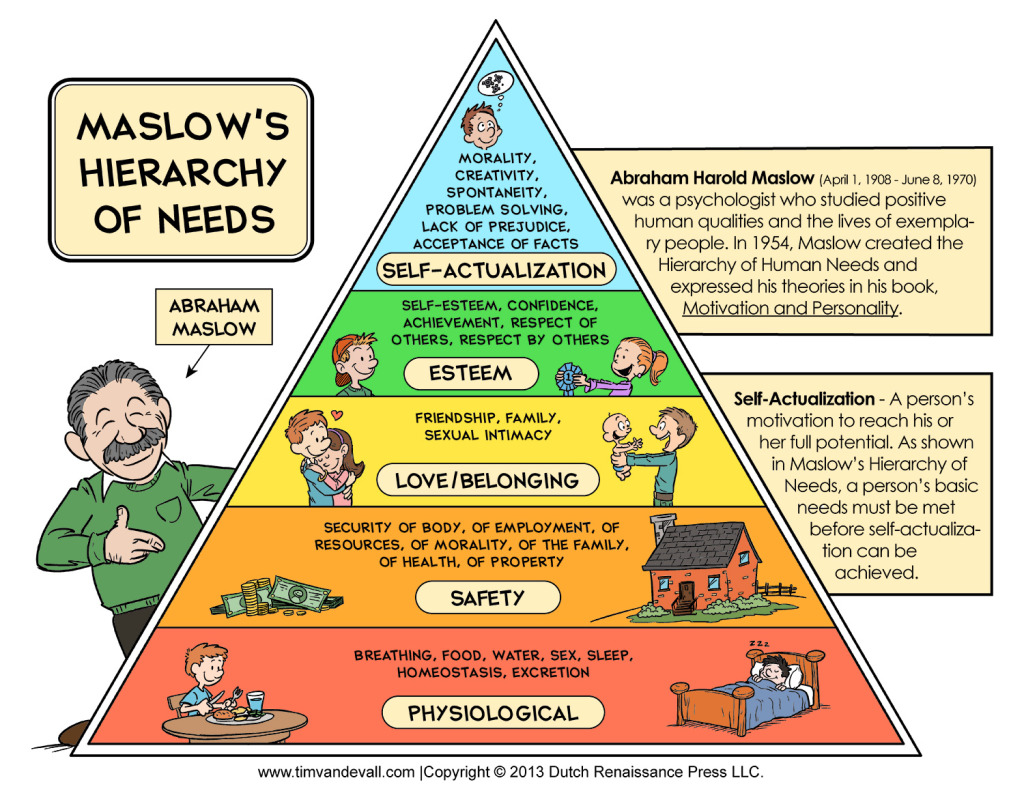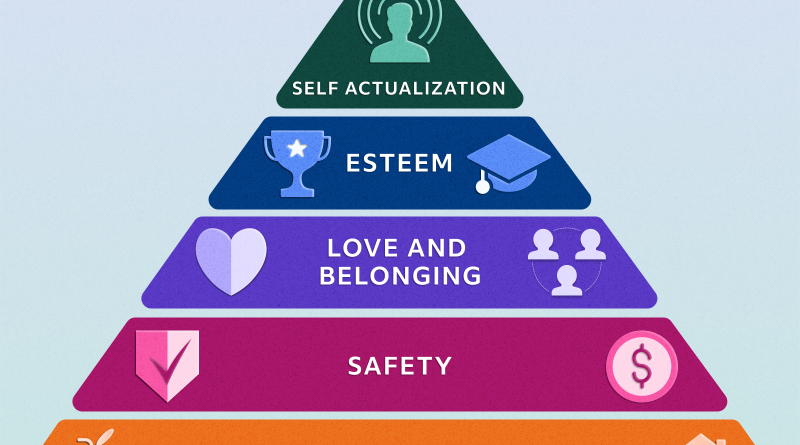Understanding What Motivates Us: How Does Maslow’s Hierarchy of Needs Factor Into Career Choice?
How did you decide what you wanted to be when you grew up? What’s the internal process involved in people’s career choices? Do we understand the motivating factors behind these choices? How do students choose what they wish to study? In the olden days, people would often become apprentices and learn by doing. People often chose to follow in their parent’s footsteps or to join the family business, which still happens today, but to a lesser degree.
Today, people are more concerned with following their own dreams and aspirations, but what personal needs or characteristics factor into those choices? To understand what motivates us, we can take a look at a theory by a highly regarded psychologist, Abraham Maslow, who postulated his psychological theory known as Maslow’s Hierarchy of Needs back in 1943.
Maslow theorized that people’s needs develop in a particular order and that they must first satisfy their basic physiological survival needs, like food, water, shelter, sleep, sex, etc. Only after these needs are met do they move on to their safety needs – the need for protection, physical security, resources, job security, income, etc. Once those needs are met, people can move on to focus on their social needs such as relationships, family, intimacy, belonging, etc. Next, after these needs are met a desire for esteem often arises within people. Esteem needs include achievement, respect, status, etc. Finally, a desire for self-actualization leads people to want to fulfill their potential and pursue their desire for personal growth, authenticity, and finding meaning in life.
Where on the pyramid does your job fall?
Survival
Material needs seem to be high on the list of priorities for many students, going into business or the field that will earn the highest income to ensure their basic survival needs are met. These students study finance, economics, accounting, business, banking… and often go on to get MBAs. They look for jobs in the financial sector as investment bankers, research analysts or go into business.
Safety
Their career choice also allows them to meet their safety needs, and depending on their place of employment, might also be involved in filling their belongingness need, and depending on their position, their esteem needs as well.
Others have different primary motivations, choosing professions that have something to do with making a difference in the world, helping others, pursuing their artistic muse and inspiration. This doesn’t mean they’re not interested in meeting their own more basic needs, but these are not their primary motivation.
For those who most value safety and security, careers in the military, law enforcement, or as some type of first- responder might be chosen.
Belongingness
For those who are motivated by belongingness needs, social and societal concerns will come into play. These are often our social workers, ministers and nonprofit professionals.
Esteem
Once people in any of these careers, or working in any of these fields reach a high level of proficiency, esteem needs will lead them to take on leadership roles – possibly in their own business or nonprofit, and/or in the community and society.
A lawyer might choose to become a judge or a politician. A teacher might choose to advance to become a department head or the school’s principal.
Focusing on Self-Actualization
Those who choose careers in the nonprofit sector have a different set of priorities, but which “level” of the hierarchy of needs are they drawn to dedicate their careers and devote their passions to?
All are interested in “making a difference in the world,” but what’s the driving force that motives them?
For those working with nonprofits, how do they choose the type of nonprofit they wish to be part of?
And what are the needs from the hierarchy that grant funders choose to support and why?
Both groups are interested in “making a difference in the world,” but what’s their passion? What motivates them?
Nonprofits can address needs on any of the levels of the hierarchy’s pyramid. Think of survival needs as those working for the homeless, or to feed the poor and hungry; safety as those working to end domestic violence or sex trafficking, those working for disaster relief could fall under both categories.
Those working with faith-based and community service organizations are working on that third level of belongingness, but also possibly the fifth level – including self-actualization.
Later formulations of the hierarchy of needs added three more basic needs, increasing the pyramid of needs to eight. These needs include the first four, plus cognitive needs:
- the need for knowledge,
- to satisfy one’s curiosity,
- to gain understanding, and
- self-awareness.
Aesthetic needs – the need for beauty, sensory stimulation and balance, (followed by Self-Actualization needs), and finally, at the pyramid’s pinnacle, Transcendence needs – the need or desire for spirituality, which might include the desire for oneness, unity, to address global concerns and to help others to achieve self-actualization or even transcendence. Grants for musicians and artists, arts and culture grants, would fall under these needs.
The complete expanded Hierarchy of Needs:
1. Survival
2. Safety
3. Belongingness
4. Esteem
5. Cognitive
6. Aesthetic
7. Self-Actualization
8. Transcendence

Some critics believe that the pyramid of needs was created with a western, individualistic cultural outlook. In some countries, social, societal needs might be considered higher or more important than self-actualization. A basic tenet of Maslow’s theory is that it’s unlikely for individuals to progress to a higher level if they are uncertain how to satisfy a more basic need.
When choosing to start a nonprofit or work for one, how do people decide what to choose?
Do they choose a nonprofit that is looking to assist people to get shelter, food, clothing or meet other physiological needs? Or are they drawn to protecting people such as children, victims of abuse or sex-trafficking…? Or are they motivated by cognitive needs – interested in research into finding a cure for cancer? Sometimes these can also become esteem needs, wanting to find the cure for cancer and win a Nobel prize, Or with aesthetic needs, not just to produce art, or even art that moves people, but to write a Pulitzer prize winner.
Other theories of personality might come into play and help us understand our motivations such as the Enneagram, Myers-Briggs, and others. Risk takers will found their own nonprofits or businesses while those who seek more security will join an already established enterprise.
Debra Wheatman in her article “Your Career Hierarchy of Needs,” has some great suggestions for reaching the pinnacle of self-actualization in your career. (https://careersdonewrite.com/blog/your-career-hierarchy-of-needs.)
Regardless of which needs people are looking to meet, they can find funding through grants or crowdfunding to pursue their needs or actualize their dreams. Find them on GrantWatch, the leading grant listing directory.

